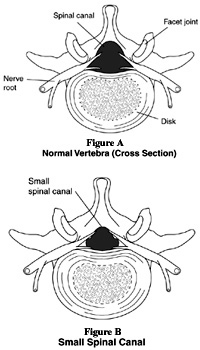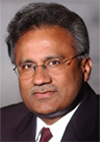 The
most common indication for surgery in persons aged over 60 in the
United States is Lumbar Spinal Stenosis (LSS). Currently, it is
estimated that as many as 400,000 Americans, most over the age of
60, may already be suffering from the symptoms of lumbar spinal
stenosis [The American Association of Neurological Surgeons (AANS)
and The Congress of Neurological Surgeons (CNS)] and this number is
expected to grow as members of the baby boom generation begin to
reach their 60s over the next decade.
The
most common indication for surgery in persons aged over 60 in the
United States is Lumbar Spinal Stenosis (LSS). Currently, it is
estimated that as many as 400,000 Americans, most over the age of
60, may already be suffering from the symptoms of lumbar spinal
stenosis [The American Association of Neurological Surgeons (AANS)
and The Congress of Neurological Surgeons (CNS)] and this number is
expected to grow as members of the baby boom generation begin to
reach their 60s over the next decade.
According to the U.S. Census Bureau, people over 60 will account for
18.7% of the domestic population in 2010 versus 16.6% in 1999.
According to the United Nations' Population Division, Department of
Economic and Social Affairs, the trend is global with the number of
persons aged 60 years or older estimated to be nearly 600 million in
1999 and is projected to grow to almost 2 billion by 2050, at which
time the population of older persons will be larger than the
population of children (0 to 14 years) for the first time in human
history. The majority of the world's older persons reside in Asia
(53 per cent), while Europe has the next largest share (25 per
cent).
The prevalence of musculo-skeletal disorders and the cost to treat
them led the World Health Organization and the United Nations to
declare 2000-2010 be the Decade committed to improving quality of
life to people with bone and joint disease and injuries throughout
the world.
"Musculo-skeletal conditions are crippling diseases that are the
most common causes of severe long-term pain and physical disability,
affecting hundreds of millions of people across the world. The
extent of human suffering is expected to worsen as people live
longer and the number of accidents increases. Resulting health
problems will cause significant economic burden, escalating the
amount of money governments will need to spend and potentially
denying patients the right to necessary treatments and
rehabilitation."
"The increasing age of the population will produce an increase in
surgery for lumbar spinal stenosis. The risk of this type of surgery
requires studies to determine the natural history of the condition,
the risk/benefit ratios of surgery with and without spinal fusion,
and the relative benefits of non-surgical treatments."
- The Bone and Joint Decade 2000-2010 Inaugural Meeting: April 17
and 18, 1998, Lund, Sweden.
LSS is possibly one of the most under and/or misdiagnosed syndromes
today as many of these patients may not know they have a disease but
instead, feel that they are just getting old and have to accept the
pain and diminished physical activity associated with aging. For
many the diagnosis is simply the middle, and by the time a positive
diagnosis is made the patients have already surrendered their
quality of life to the restrictions imposed on them by the disease
and yet treatment options remain unclear.
Once a patient has a positive diagnosis the treatment options that
are available to address the symptoms outnumber those that address
the fundamental lesion, a spinal canal that has been compromised by
hard and/or soft tissue. Even today, the indications for surgery are
not clearly defined and the only alternative is conservative,
non-surgical therapy. Many patients, when presented with their
options, choose to postpone surgery through non-surgical measures
either indefinitely or until their ability to ambulate is so
severely compromised that they are functionally disabled.
What Is Spinal Stenosis?
Lumbar spinal stenosis is a condition involving any type of
narrowing of the spinal canal or nerve-root canals.
Definition and Classification
There are many forms of lumbar spinal stenosis. The most common is
degenerative stenosis, occurring in virtually the entire adult
population as a result of the natural process of aging.
 Lumbar Spinal Stenosis is a degenerative narrowing of the spinal
canal, nerve root canals and/or intervertebral foramina caused by
bone and/or ligament hypertrophy in local, segmental or generalized
regions. The narrowing results in compression of spinal nerves and
nerve roots, causing a constellation of symptoms, including lower
back pain, neurogenic claudication and lower extremity pain.
Lumbar Spinal Stenosis is a degenerative narrowing of the spinal
canal, nerve root canals and/or intervertebral foramina caused by
bone and/or ligament hypertrophy in local, segmental or generalized
regions. The narrowing results in compression of spinal nerves and
nerve roots, causing a constellation of symptoms, including lower
back pain, neurogenic claudication and lower extremity pain.
Congenital lumbar stenosis is relatively rare and usually presents
at an early age, often between 30 and 40. Acquired LSS is more
common and generally develops when patients are in their 60s or
older. It is a puzzling condition that can neither be predicted nor
prevented. It does not distinguish by sex, race, or ethnicity. Nor
is it associated with any particular occupation or any particular
body type.
Symptoms include:
-
Dull to severe aching pain in the lower back or buttocks - develops
with walking or other activities.
-
Pain can radiate into one or both thighs and legs (60% bilateral
pain).
-
Numbness, weakness or paresthesia involving the lower extremities.
-
Symptoms relieved by bending forward, sitting or lying down.
Current Treatment Options
Treatment for spinal stenosis includes medications, physical
therapy, epidural steroid injections, and occasionally surgery. In
one meta-analysis of 74 journal articles related to the surgical
management of lumbar spinal stenosis, it was determined that the
mean time of symptom duration for patients electing to undergo
decompressive laminectomy was 46.51 months (3.87 years) and the
minimum time from first onset to surgery was 11 months. While some
patients experience a rapid decline in physical function and a rapid
increase in symptom severity, for many more, the process of becoming
disabled from lumbar spinal stenosis is a slow one. Once the
diagnosis has been made positively, the process of treating the
disease begins with a regimen of non-invasive conservative therapy.
For more information on non-surgical and surgical treatment options
for treating spinal stenosis and to view informative videos,
please click here:
Animated Educational Videos.
Last revised: July 6, 2008
by Yogendra Bharat, MD


 The
most common indication for surgery in persons aged over 60 in the
United States is Lumbar Spinal Stenosis (LSS). Currently, it is
estimated that as many as 400,000 Americans, most over the age of
60, may already be suffering from the symptoms of lumbar spinal
stenosis [The American Association of Neurological Surgeons (AANS)
and The Congress of Neurological Surgeons (CNS)] and this number is
expected to grow as members of the baby boom generation begin to
reach their 60s over the next decade.
The
most common indication for surgery in persons aged over 60 in the
United States is Lumbar Spinal Stenosis (LSS). Currently, it is
estimated that as many as 400,000 Americans, most over the age of
60, may already be suffering from the symptoms of lumbar spinal
stenosis [The American Association of Neurological Surgeons (AANS)
and The Congress of Neurological Surgeons (CNS)] and this number is
expected to grow as members of the baby boom generation begin to
reach their 60s over the next decade.  Lumbar Spinal Stenosis is a degenerative narrowing of the spinal
canal, nerve root canals and/or intervertebral foramina caused by
bone and/or ligament hypertrophy in local, segmental or generalized
regions. The narrowing results in compression of spinal nerves and
nerve roots, causing a constellation of symptoms, including lower
back pain, neurogenic claudication and lower extremity pain.
Lumbar Spinal Stenosis is a degenerative narrowing of the spinal
canal, nerve root canals and/or intervertebral foramina caused by
bone and/or ligament hypertrophy in local, segmental or generalized
regions. The narrowing results in compression of spinal nerves and
nerve roots, causing a constellation of symptoms, including lower
back pain, neurogenic claudication and lower extremity pain. 



